If your plumeria is overwatered, it’s important to take quick action to save the plant. Here are 8 steps to help you save an overwatered plumeria:
1. Check the soil. If the soil is soggy or waterlogged, it’s a sure sign that your plumeria is overwatered.
2. Check the leaves. If the leaves are wilted or yellowing, it’s another sign that your plumeria is overwatered.
3. Check the roots. If the roots are mushy or have started to rot, it’s a clear sign that your plumeria is overwatered.
4. Take action to improve drainage. If your plumeria is overwatered, the first thing you need to do is improve drainage. This can be done by adding more drainage holes to the pot, or by moving the pot to a location with better drainage.
5. Allow the soil to dry out. Once you’ve improved drainage, you need to allow the soil to dry out. This can be done by withholding water for a week or two.
6. Monitor the plant closely. Once you’ve stopped watering and the soil has had a chance to dry out, monitor the plant closely. If it starts to wilt, it’s a sign that it’s still overwatered. In this case, you may need to repot the plant with fresh, dry soil.
7. Water only when necessary. Once your plumeria has recovered from being overwatered, it’s important to water only when necessary. This means allowing the soil to dry out completely between waterings.
8. Be patient. It can take several weeks or even months for an overwatered plumeria to recover. Be patient and don’t give up hope. With proper care, your plumeria will eventually bounce back.
Dangers of Overwatering Your Plumeria
The stem may also start to rot. Overwatering can lead to fungal growth and root rot, which can kill your plant. If you overwater your plumeria, you may notice the leaves turning yellow and falling off.
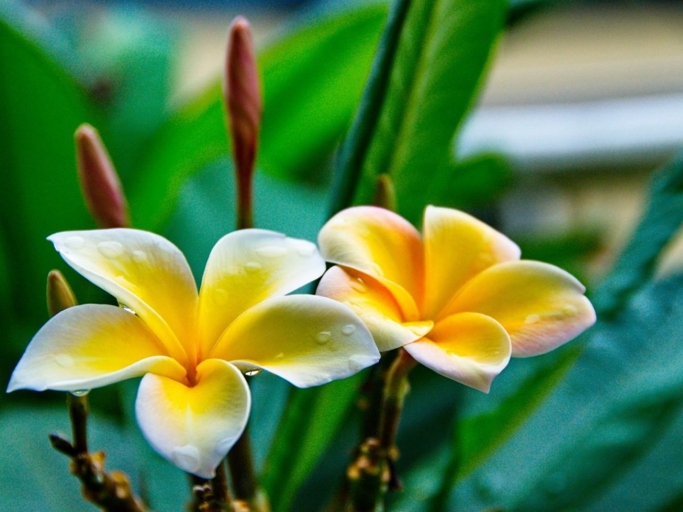
Allow the water to drain completely before watering again. Stick your finger in the soil to check the moisture level. To avoid overwatering, water your plumeria only when the soil is dry. If the soil is dry, give the plant a deep watering.
If you think your plumeria is overwatered, stop watering it and allow the soil to dry out completely. You may also need to repot the plant in fresh, dry soil. If the roots are rotted, you may need to trim them back.
Overwatering your plumeria is dangerous and can kill your plant. If you think your plumeria is overwatered, take action to dry out the soil and save your plant. Be sure to water only when the soil is dry and always allow the water to drain completely.
Signs of Overwatered Plumeria
If your plumeria is wilting, yellowing, or dropping leaves, it may be overwatered. Other signs of overwatering include fungal growth, root rot, and leaf drop. If they’re mushy or black, it’s time to take action. If you think your plumeria is overwatered, take a look at the roots.
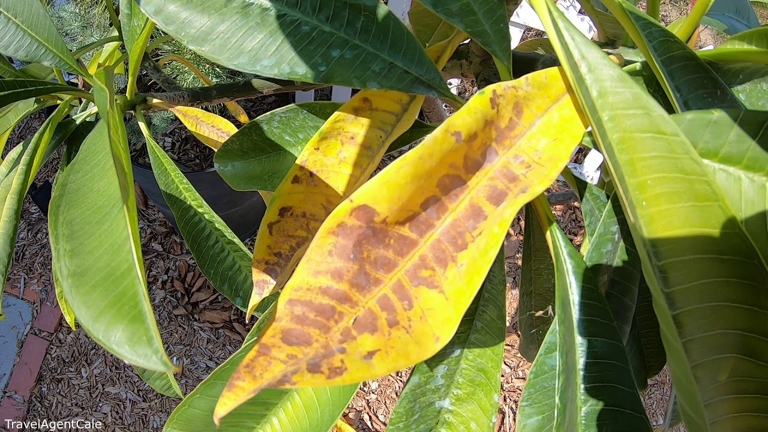
If the roots are waterlogged, you may need to repot the plant. There are a few things you can do to save an overwatered plumeria. Then, check the drainage and make sure the roots are not sitting in water. Finally, make sure you’re not over-fertilizing, as this can lead to waterlogging. First, stop watering the plant and allow the soil to dry out.
Plumeria Leaves Turning Yellow
Here are 8 steps to help save your plant: If your Plumeria’s leaves are turning yellow, it’s a sign that the plant is overwatered.
If the soil is soggy or feels wet, it’s a sign that the plant is overwatered. Check the soil. 1.
Allow the soil to dry out. If the soil is too wet, it will suffocate the roots and kill the plant. 2.
Check the drainage. 3. Make sure that the pot has good drainage so that the water can drain out.
Reduce watering. 4. Water the plant less frequently and allow the soil to dry out between watering.
Overwatered plants are more susceptible to pests and diseases. Check for pests. 5.
6. Repotting the plant will help to aerate the roots and improve drainage. Repot the plant. If the plant is pot-bound, it will need more water.
Prune the plant. Pruning the plant will help to reduce the amount of water it needs. 7.
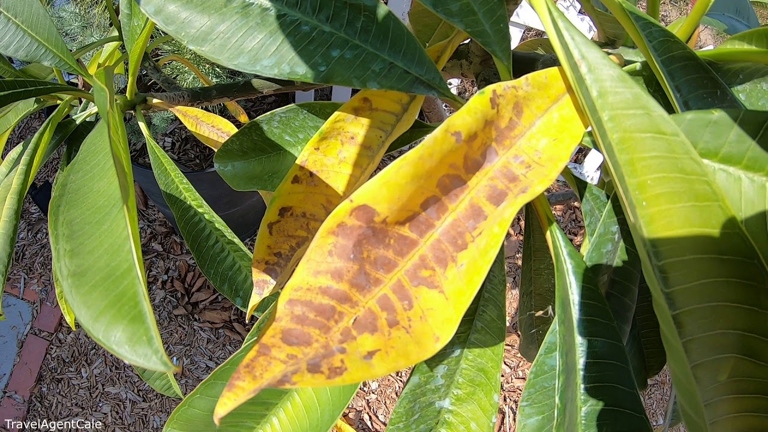
Move the plant to a sunny location. Overwatered plants need more sunlight to help them dry out. 8.
Plumeria Wilting
If your plumeria is wilting, it’s likely due to overwatering. To save your overwatered plumeria, follow these steps: While it’s important to keep your plumeria hydrated, too much water can cause the roots to rot and the plant to wilt.
If the soil is soggy or waterlogged, it’s time to take action. Check the soil. 1.

Stop watering. If you’re overwatering your plumeria, the first step is to stop giving it any more water. 2.
Once you’ve stopped watering, let the soil dry out completely. This may take a few days. Let the soil dry out. 3.
Once the soil is dry, repot your plumeria in fresh, dry soil. 4. Repot in dry soil.
Once your plumeria is repotted, water it sparingly. Water sparingly. 5. Water only when the soil is dry to the touch.
By following these steps, you can save your overwatered plumeria and help it recover.
Stem Will Rot from the Bottom Up
This is because the waterlogged soil prevents the roots from getting the oxygen they need to function properly. The first step to saving an overwatered plumeria is to stop watering it. If the soil is too wet, the roots will continue to rot, so it’s important to let the soil dry out completely. If your plumeria is overwatered, the stem will rot from the bottom up. Once the soil is dry, you can start watering your plumeria again, but be sure to water it deeply and less often.
Brown Spots on Foliage
Brown spots on the foliage are a common symptom of overwatering, and can be a sign that your plant is in distress. When it comes to plumeria, too much water can be a problem. If you see brown spots on your plumeria, take action immediately to save your plant.
Here are 8 steps to take to save an overwatered plumeria:
Stop watering your plumeria immediately. If you’re seeing brown spots on the foliage, it’s a sign that your plant is getting too much water. 1.
Make sure that your pot has good drainage so that excess water can escape. Check the drainage of your pot. 2.
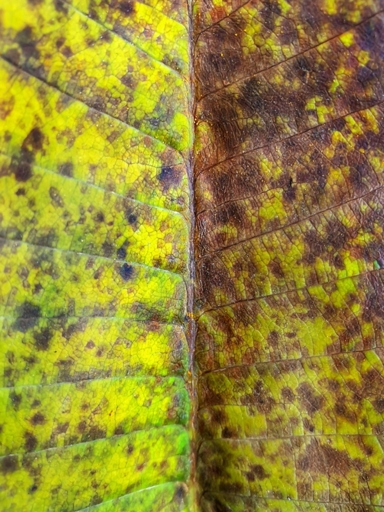
3. Once the soil is dry, you can start watering your plant again. Let the soil of your plumeria dry out completely.
4. Water your plumeria only when the soil is dry to the touch. Reduce the frequency of watering.
Adjust your watering schedule according to the season. In the winter, your plumeria will need less water than in the summer. 5.
If it’s too cold, your plumeria won’t need as much water. 6. Be mindful of the temperature.
Inspect your plant carefully and treat it if necessary. Check for pests. 7. Overwatered plumeria are more susceptible to pests and diseases.
Adjust your watering schedule accordingly. Keep an eye on your plumeria. If you see the brown spots reappearing, it’s a sign that you’re still overwatering your plant. 8.
With a little care, your plant will be healthy and thriving in no time. By following these steps, you can save your overwatered plumeria.
Plumeria Soft Leaves
Here are 8 steps you can take to save your plant: If your Plumeria’s leaves are soft, it’s a sure sign of overwatering.
1. Immediately stop watering your Plumeria.
Allow the soil to dry out completely. 2.

If the leaves are wilted, gently remove them. 3.
4. If they’re black or mushy, they’ll need to be trimmed away. Inspect the roots for signs of rot.
Once the roots have been trimmed, replant your Plumeria in fresh, well-draining soil. 5.
6. Water only when the soil is completely dry.
If the leaves are still soft, you can try misting them with water. 7.
Be patient – it may take a few weeks for your Plumeria to recover. 8.
Moldy Soil
Moldy soil is a common problem with overwatered plumeria. To save an overwatered plumeria, it is important to take the following steps: The mold can cause root rot, which can eventually kill the plant.
Remove the moldy soil from around the roots of the plant. 1.
2. disinfect the roots with a fungicide.
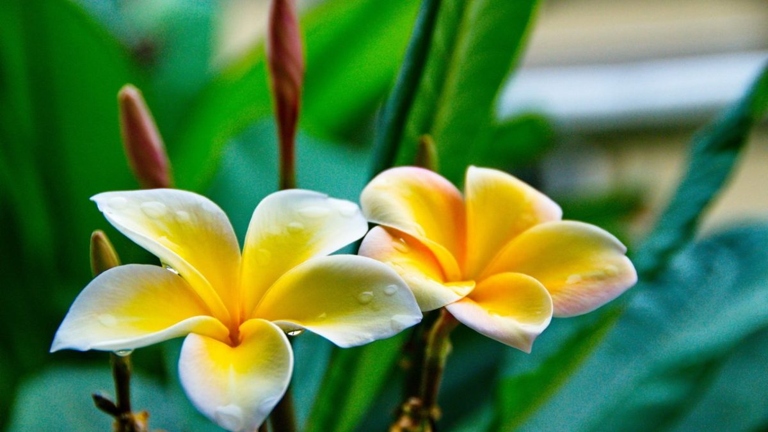
3. replant the plumeria in fresh, well-draining soil.
4. water the plant deeply, but only when the soil is dry.
By taking these steps, you can save your overwatered plumeria and prevent the mold from causing further damage.
Root Rot
If the root rot is caught early, it may be possible to save the plant by replanting it in fresh, well-draining soil. Root rot is one of the most common problems with plumeria. The first step to saving an overwatered plumeria is to check for root rot. If the roots are mushy or black, they are probably rotted and will need to be replaced. If the root rot is severe, the plant will need to be discarded.
Saving Overwatered Plumeria Plant
If your plumeria plant is wilting, its leaves are yellowing, or its flowers are drooping, it’s likely a victim of overwatering. When it comes to overwatering, it’s often difficult to tell when you’ve gone too far. To save your plant, follow these eight steps:

If so, it’s likely overwatered. First, assess the damage. 1. Is your plant wilting, yellowing, or drooping?
Is it soggy or waterlogged? If so, it’s time to take action. Next, check the soil. 2.
3. Stop watering your plant immediately. This may seem counterintuitive, but overwatering is often the result of too much water, not too little.
This may take a few days, so be patient. 4. Allow the soil to dry out completely.
Once the soil is dry, water your plant deeply but sparingly. 5. Water only when the soil is dry to the touch.
6. Overwatering is often a result of too much water, not too little. Monitor your plant closely.
If your plant shows signs of improvement, continue to water sparingly. If not, consult a professional. 7.
It may take some time for your plant to recover from overwatering. Finally, be patient. 8.
(1) Assess the Severity of Overwatering Damage
While both of these problems are serious, root rot is much more difficult to fix. If the leaves are yellow and the stem is firm, the plant has likely suffered from leaf scorch. If the leaves are wilted and the stem is soft, it is likely that the plant has suffered from root rot. When it comes to overwatering damage, the first step is to assess the severity.

If they are brown and mushy, you will need to cut away all the affected roots and replant the plant in fresh soil. If the roots are only slightly brown, you may be able to save the plant by trimming away the affected roots and replanting it in fresh soil. If you think your plant has root rot, the first thing you should do is remove it from the pot and check the roots.
If the leaves are only slightly yellow, you may be able to save the plant by trimming away the affected leaves and replanting it in fresh soil. If they are yellow and dry, you will need to trim away all the affected leaves and replant the plant in fresh soil. If you think your plant has leaf scorch, the first thing you should do is remove it from the pot and check the leaves.
(2) Change to a Fast-Draining Soil after Drying Out the Plant
This will help to dry out the plant and prevent it from becoming waterlogged. When it comes to overwatered plumeria, the first step is to change to a fast-draining soil. Once the plant has dried out, it is important to monitor the watering closely. Water the plant only when the soil is dry to the touch.
(3) Prune Away Affected by Plant Matter
One of the first things you should do is prune away any affected leaves or branches. If you notice that your plumeria’s leaves are wilting or that the plant is looking generally unhealthy, it’s important to take action immediately. This will help the plant to focus its energy on healthy growth and prevent the spread of disease.
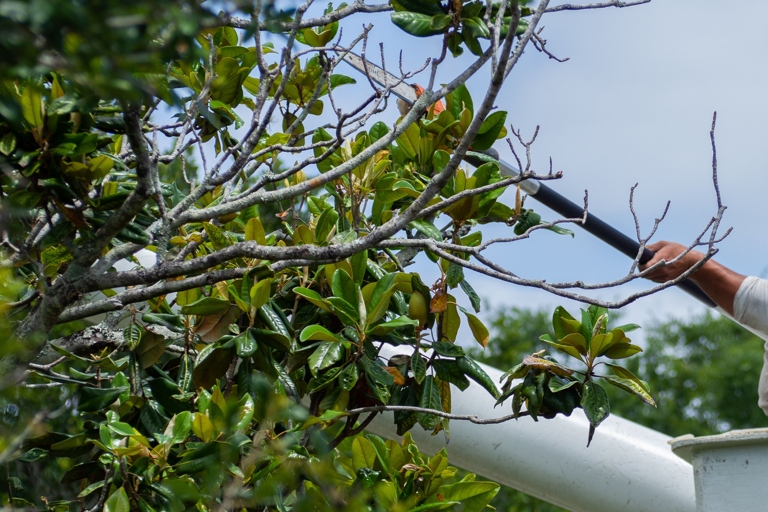
When pruning, be sure to disinfect your tools between cuts. This will help to prevent the spread of disease and ensure that your plumeria has the best chance of recovery.
Once you have removed all of the affected leaves and branches, it’s important to monitor the plant closely. Make sure to keep an eye on the soil moisture levels and adjust your watering accordingly. With a little care and attention, your plumeria should soon be back to its healthy self.
(4) Treat the Roots with a Fungicide
This will help to prevent root rot, which can kill your plant. There are a few different fungicides that you can use, but make sure to read the labels carefully and follow the instructions. When it comes to plumeria care, one of the most important things you can do is treat the roots with a fungicide.

Be sure to remove all of the old, rotted roots before replanting. If you think your plumeria may be overwatered, the first step is to check the roots. If they are mushy or have started to rot, then you will need to take action immediately. The best way to save an overwatered plumeria is to replant it in fresh, well-draining soil.
If you continue to water your plumeria too frequently, you will only encourage root rot to return. Allow the soil to dry out completely between waterings. Once you have replanted your plumeria, water it deeply but only once a week.
(5) Select the Right Pot to Repot the Plumeria
When it comes to repotting plumeria, the most important thing to consider is the pot. The pot you choose should be large enough to accommodate the roots of the plant, but not too large that the roots are cramped. It should also have drainage holes to allow excess water to escape.
Plastic pots are lightweight and inexpensive, but they can retain heat and cause the roots to overheat. Clay pots are heavier and more expensive, but they allow the roots to breathe and prevent the plant from becoming waterlogged. When selecting a pot, it is also important to consider the material.
Once you have selected the right pot, you can repot your plumeria following these simple steps:
This will help to loosen the roots and make the process easier. 1. Water the plant thoroughly the day before you plan to repot it.
Carefully remove the plant from its current pot, taking care not to damage the roots. 2.
Place the plant in the new pot and fill in around the roots with fresh potting mix. 3.
4. Water the plant well and place it in a bright, warm spot.
Keep an eye on the plant and water as needed to keep the soil moist but not soggy. 5.
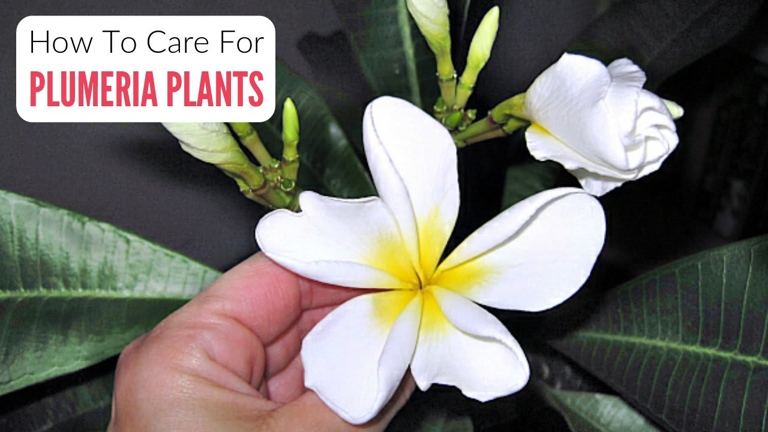
With a little care, your plumeria will soon be thriving in its new pot!
(6) Repotting Your Plant
With a little bit of care, you can save your plant. If you have an overwatered plumeria, don’t despair! Here are eight steps to take:
Remove the plant from the pot. 1.
If they are mushy or black, they will need to be trimmed. Inspect the roots. 2.
3. Place the plant in a well-draining pot.
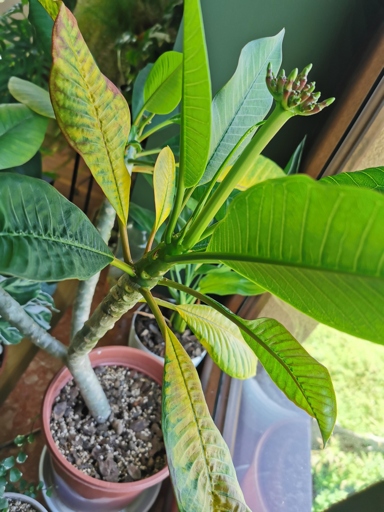
4. Water the plant sparingly, only enough to keep the roots moist.
Place the pot in a bright, sunny location. 5.
After a few weeks, you can begin to water the plant more frequently. 6.
Once the plant is established, you can water it according to its needs. 7.
Enjoy your healthy, happy plumeria! 8.
(7) Position Your Plumeria Properly
There are steps you can take to save your plant. If your plumeria is overwatered, don’t despair.
First, position your plumeria properly. If the pot is sitting in a saucer, empty the saucer after each watering. The plant needs good drainage, so make sure it is in a pot with drainage holes.
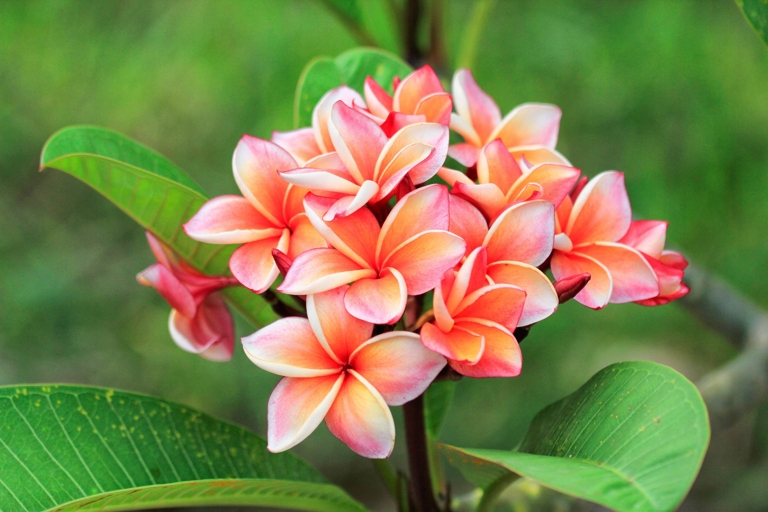
Water only when the top inch of soil is dry. Allow the soil to dry out between waterings. Second, cut back on watering.
Use a fertilizer designed for flowering plants. Third, fertilize your plumeria. Follow the directions on the package.
The plant needs at least six hours of sunlight each day. Fourth, make sure your plumeria is getting enough light.
By following these steps, you can save your overwatered plumeria.
(8) Adjust the Watering Schedule
Water your plumeria less frequently, and make sure the soil has a chance to dry out between waterings. If you’re overwatering your plumeria, the first step is to adjust your watering schedule.
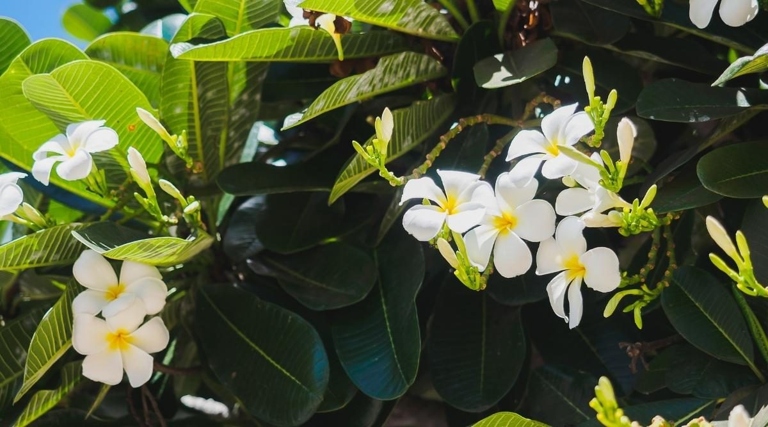
If you’re not sure how often to water your plumeria, stick your finger in the soil. If it’s dry to the touch, it’s time to water. If the soil is still moist, wait a few more days.
It’s also important to make sure your plumeria is getting enough light. If it’s not getting enough light, it will need less water.
The leaves will be less wilted, and the plant will overall look healthier. If you follow these steps, you should see a noticeable difference in your plumeria’s health.
How Often Do You Water A Plumeria?
When it comes to watering your plumeria, the general rule of thumb is to water deeply and less frequently. If you water more frequently than this, you run the risk of overwatering your plant. This means that you should water your plumeria when the top 2-3 inches of soil are dry.
The roots of an overwatered plumeria may also be discolored or have started to rot. If you think your plumeria is overwatered, there are a few telltale signs to look out for. The leaves of an overwatered plumeria will be wilted and droopy, and the stems may be soft or mushy.
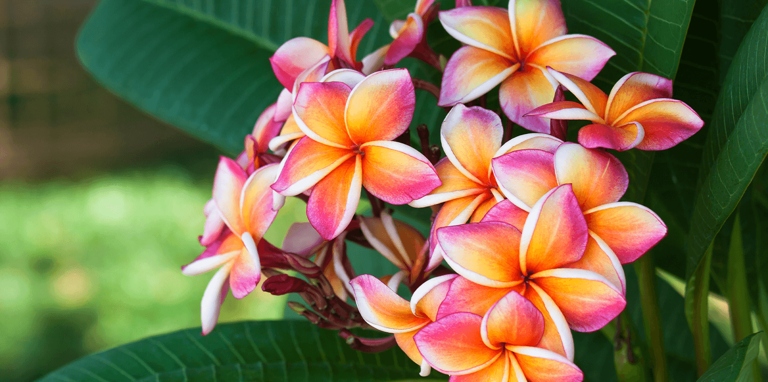
You may also need to repot your plant into a pot with better drainage. If you think your plumeria is overwatered, the best course of action is to let the soil dry out completely before watering again.
How to Water Plumeria in Containers
Plumeria (Plumeria rubra) is a tropical plant that is often grown in containers. The plant is native to Central America, Mexico, and the Caribbean. Plumeria can be grown in any type of container, but it must have drainage holes.
If the soil is constantly wet, the roots will rot. Do not water the plant more than once a week. To water plumeria in containers, water the plant deeply and then allow the soil to dry out completely before watering again.
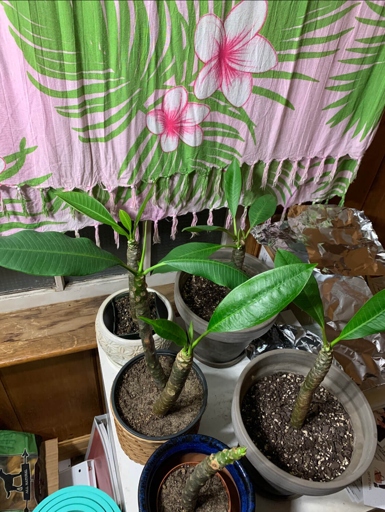
If the leaves of your plumeria start to turn yellow, it is a sign that the plant is not getting enough water. If the leaves turn brown and fall off, the plant is getting too much water.
Fertilize the plant every two weeks during the growing season. To fertilize plumeria in containers, use a balanced fertilizer that is high in phosphorus.
How to Water Plumeria Indoors
If your plumeria is overwatered, it’s important to take action to save the plant. Here are eight steps to take to save an overwatered plumeria:
The first step is to check the soil. If it’s soggy or wet, it’s likely that your plant is overwatered. Check the soil. 1.
Stop watering. Once you’ve confirmed that the soil is wet, stop watering your plumeria. 2.
This may take a few days. Allow the soil to dry out completely. 3. Allow the soil to dry.
Once the soil is dry, check the roots of your plant. 4. Check the roots. If they’re mushy or black, they’re damaged.

If the roots are damaged, trim them back to healthy tissue. 5. Trim the roots.
6. Repot the plant in fresh, dry soil. Repot the plant.
Water carefully. Water your plumeria carefully, making sure the soil is dry before watering again. 7.
Monitor the plant. Monitor your plant closely. If it shows signs of stress, such as wilting leaves, it’s important to take action immediately. 8.
How to Water Plumeria Grown Outdoors
Here are a few tips on how to water your plumeria grown outdoors: When it comes to watering your plumeria, it’s important to know how much water your plant needs and when to water it.
Check the soil before watering. 1. The soil should be dry to the touch before you water your plumeria.
Water your plumeria early in the day. This will allow the plant to absorb the water before the heat of the day sets in. 2.
Water slowly and deeply. 3. Plumeria have shallow roots, so it’s important to water slowly and deeply to encourage deep root growth.
4. Let the water soak in before watering again. Watering again too soon can lead to overwatering, which can be detrimental to your plant.
Check the leaves for signs of overwatering. 5. If the leaves are wilting or yellowing, this is a sign that your plant is getting too much water.

By following these simple tips, you can ensure that your plumeria gets the right amount of water and stays healthy and vibrant.
When to Stop Watering Plumeria
When to Stop Watering Plumeria
If you have overwatered your plumeria, it is important to take steps to save the plant. However, you may be wondering when to stop watering plumeria.
If the leaves are wilting or the stem is drooping, this is a sign that the plant is not getting enough water. The first step is to check the vital signs of your plant.
Once the plant has dried out, you can then water it again. If you see these signs, you should stop watering plumeria and allow the plant to dry out.

It is also important to check the soil before watering plumeria. The soil should be dry to the touch before you water the plant.
If you are unsure about when to stop watering plumeria, it is best to consult with a professional. They will be able to help you determine the best course of action for your plant.
Should You Water Plumeria in Winter?
If you live in a climate where it snows or rains frequently in winter, you may be wondering if you should water your plumeria during this season. The answer is yes! While plumeria are dormant in winter, they still need to be watered every few weeks to prevent them from drying out.
If you live in an area with very little rainfall, you may need to water your plumeria more often. If the leaves start to turn brown and fall off, this is a sign that the plant is not getting enough water.

Make sure the soil is moist, but not soggy. If you’re not sure whether or not to water, it’s better to err on the side of caution and give the plant a little extra water. To water plumeria in winter, simply give the plant a deep watering every few weeks.
Frequently Asked Questions
1. What are the 8 steps to save an overwatered plumeria?
1) Immediately remove the plant from the water.
2) Allow the plant to drain and dry for several hours.
3) Inspect the roots and trim off any that are black or mushy.
4) Repot the plant in fresh, well-draining potting mix.
5) Water only when the top inch of soil is dry.
6) Place the plant in a bright, sunny location.
7) Fertilize monthly with a balanced fertilizer.
8) Keep an eye on the plant and adjust watering as needed.
2. What are the vital signs of an overwatered plumeria?
The vital signs of an overwatered plumeria are wilting leaves, yellowing leaves, and black or mushy roots.
3. Why is it important to remove the plant from the water immediately?
It is important to remove the plant from the water immediately because the roots can quickly become waterlogged and begin to rot.
4. How long should I allow the plant to drain and dry?
Allow the plant to drain and dry for several hours.
5. What should I do if I find black or mushy roots?
If you find black or mushy roots, you should trim them off.
Final thoughts
If you have an overwatered plumeria, don’t despair. There are a few simple steps you can take to save your plant. First, check the vital signs. If the leaves are wilted and the stem is soft, your plant is probably overwatered. Second, remove the plant from the pot and allow the excess water to drain. Third, replant the plumeria in a well-draining potting mix. Fourth, water the plumeria only when the soil is dry to the touch. Fifth, fertilize the plumeria with a balanced fertilizer. Sixth, provide the plumeria with adequate light. Seventh, prune the plumeria to remove any dead or dying leaves. Eighth, repot the plumeria in a larger pot if necessary. By following these simple steps, you can save your overwatered plumeria.
